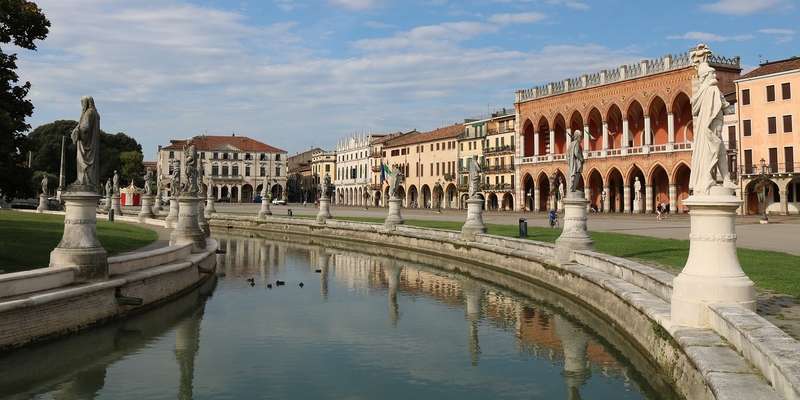- Home
- Useful Tips
- Padua's most significant...
Standing before Padua's Renaissance sculptures, many travelers experience a quiet frustration – they recognize these are masterpieces, but without context, the artistry becomes mere decoration. Over 60% of cultural tourists report feeling they 'missed something important' at sculpture sites, according to Veneto region surveys. The problem isn't just information gaps; it's timing your visit to avoid crowds that obscure details, understanding the revolutionary techniques that made these works groundbreaking, and discovering which lesser-known pieces deserve your limited attention. Padua's sculptural treasures tell a story of artistic rebellion and technical mastery that shaped Western art, yet most guides reduce them to checklist items between Padua's fresco cycles and university visits. This leaves visitors admiring the Gattamelata statue's imposing presence without grasping how Donatello defied bronze-casting conventions, or passing by the Santo Altar reliefs unaware they're seeing the first Renaissance sculptures to incorporate true linear perspective.


Why Donatello's Gattamelata revolutionized public monuments
The equestrian statue of Erasmo da Narni, known as Gattamelata, isn't just Padua's most photographed sculpture – it's the work that shattered medieval artistic hierarchies. Before Donatello cast this bronze giant in 1453, life-sized equestrian monuments were reserved exclusively for kings and emperors. By memorializing a mercenary captain with the grandeur previously reserved for rulers, the artist made a democratic statement that still resonates in public art today. Notice how the horse's raised hoof creates dynamic tension, a departure from static medieval poses, while Gattamelata's thoughtful expression conveys human complexity rather than idealized power. Local guides often point out the optical trick Donatello employed – the rider's proportions appear perfectly balanced only when viewed from the left front angle, his intended vantage point. Morning light between 9-11 AM best reveals the subtle textures of the horse's musculature and the intricate details of the armor.
Santo Altar's hidden reliefs – where Renaissance perspective was born
While crowds flock to the Scrovegni Chapel, art historians consider Donatello's high altar at Basilica di Sant'Antonio the true birthplace of sculptural perspective. The seven bronze reliefs and twenty-one marble statues created between 1446-1450 demonstrate a quantum leap in spatial representation. Compare the earlier 'Miracle of the Mule' panel with the later 'Entombment' to see Donatello's rapid mastery of depth – foreground figures emerge dramatically while background elements recede with mathematical precision. The altar's least appreciated but most revolutionary element is the 'Putti with Garland' frieze, where playful cherubs demonstrate varying degrees of relief (from nearly in-the-round to barely raised) to create illusory space. For optimal viewing, bring binoculars to appreciate details above eye level, and visit weekdays after 2 PM when tour groups thin out. The sacristy occasionally opens the original wax models by appointment, offering unparalleled insight into the creative process.
Beyond Donatello – Padua's overlooked Renaissance masterpieces
Padua's sculptural Renaissance extends far beyond its famous Florentine import. The Ovetari Chapel in the Eremitani Church (rebuilt after WWII bombing) houses fragments of Andrea Mantegna's groundbreaking illusionistic fresco-sculpture hybrids, where painted columns appear to support three-dimensional arches. At Palazzo del Bo, the anatomical theater's 1594 wooden sculptures of medical figures demonstrate how Renaissance naturalism evolved to serve scientific inquiry. The most charming hidden gem is the tiny Oratorio di San Giorgio, where a polychrome terracotta 'Pietà' by an unknown 15th-century sculptor conveys raw emotion through crumpled drapery and Mary's agonized posture. These works require no tickets or reservations, just attentive looking. A little-known local secret: the Diocesan Museum's storage rooms (accessible by request) contain exquisite small-scale Renaissance bronzes too fragile for permanent display, including Giambologna workshop pieces that traveled north influencing German art.
Timing your sculpture visits – when Padua's crowds disappear
The difference between shuffling past masterpieces and having transformative encounters often comes down to timing. Padua's sculpture sites follow predictable crowd patterns: cruise tour groups dominate mornings (10 AM-12 PM), while university art students cluster in late afternoons. For solitary moments with the Gattamelata, arrive at dawn when the rising sun illuminates the statue's patina, or during the Italian lunch hour (1-3 PM) when even guards take breaks. The Santo Altar sees its lowest attendance on Tuesday and Thursday mornings before Mass. Should you find yourself facing crowds, remember that most visitors spend under five minutes looking at any single work – patient observers are rewarded with empty viewing spaces. From November to February, the low tourist season offers near-private access, particularly during Carnevale when attention shifts to Venice. Those unable to visit during off-hours should know that last admission tickets (sold 30 minutes before closing) often coincide with perfect golden-hour lighting on bronze surfaces.



